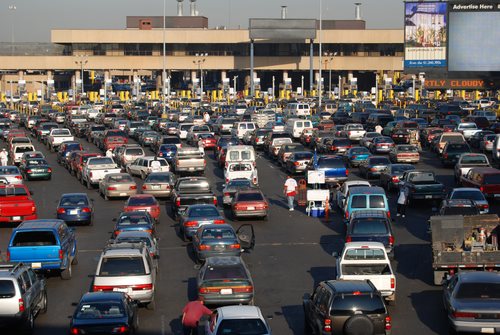
All About U.S. Immigration
Immigration to the United States has been one of the most debated topics in recent times. From the early days of the nation, immigrants from around the world have come to the country in search of a better life. However, in recent years, the debate over immigration has become increasingly contentious, with concerns about security, the economy, and the impact on society. This article provides a detailed overview of the history of immigration to the United States, the current state of immigration policy, and the latest facts and figures on immigration.
The History of Immigration to the United States
The history of immigration to the United States is rich and diverse. In the early days of the nation, most immigrants came from Europe, particularly from the British Isles, Germany, and Scandinavia. In the late 1800s and early 1900s, immigrants from eastern and southern Europe, as well as from Asia, began to arrive in large numbers. These immigrants were often poor and spoke little or no English. They faced many challenges, including discrimination, exploitation, and poverty.
Despite these challenges, immigrants have played a vital role in the development and growth of the United States. They have contributed to the country’s economy, culture, and society in countless ways and have helped to make the United States the diverse and vibrant nation that it is today.
The Current State of Immigration Policy
The current state of immigration policy is complex and controversial. The policy is governed by a complex web of laws, regulations, and procedures that vary depending on the type of visa, the status of the immigrant, and their country of origin. The three main categories of immigration are family-based, employment-based, and humanitarian.
Family-based immigration allows U.S. citizens and legal permanent residents (green card holders) to sponsor certain family members for immigration to the United States. This includes spouses, children, parents, and siblings. The process can take several years, and the number of visas available is subject to an annual quota.
Employment-based immigration is designed to attract highly skilled workers and entrepreneurs to the United States. The policy includes various categories of visas, including temporary (non-immigrant) work visas, such as H-1B visas for skilled workers, and permanent (immigrant) visas, such as EB-5 visas for investors. The process can be lengthy and complicated, and the number of visas available is subject to various quotas and restrictions.
Humanitarian immigration includes refugees, asylees, and other immigrants who are seeking protection from persecution, violence, or natural disasters in their home countries. The United States is one of the largest resettlement countries in the world, and it provides protection and assistance to thousands of refugees and asylum seekers each year.
The Latest Facts and Figures on Immigration
According to the U.S. Department of Homeland Security, the United States admitted approximately 990,000 immigrants in fiscal year 2019. This represented a slight increase from the previous year but was still well below the peak of over 1.8 million in 1991.
The number of immigrants admitted each year is subject to various quotas and restrictions. The main quota is the annual cap on the number of permanent (immigrant) visas that can be issued, which is currently set at 675,000. Other quotas and restrictions include limits on the number of visas available for certain countries and categories of immigrants, as well as various eligibility requirements.
In recent years, the number of unauthorized immigrants in the United States has been a topic of heated debate. According to the Pew Research Center, there were approximately 10.5 million unauthorized immigrants in the United States in 2017, or about 3.2% of the total population. This was down from a peak of 12.2 million in 2007 but was still higher than the estimated 5.0 million in 1990.
Unauthorized immigration occurs when a person enters or remains in the United States without proper authorization. This includes people who enter the country illegally, as well as those who overstay their visas. The issue of unauthorized immigration is controversial, with concerns about security, the economy, and the impact on society.
Conclusion
Immigration to the United States is a complex and contentious issue that has been the subject of much debate in recent years. The history of immigration to the country is rich and diverse, and immigrants have played a vital role in the development and growth of the United States. The current state of immigration policy is complex and controversial, with various quotas and restrictions on family-based, employment-based, and humanitarian immigration. The latest facts and figures on immigration show that the number of immigrants admitted each year is subject to various quotas and restrictions, and the number of unauthorized immigrants in the United States is a topic of heated debate.
U.S Immigration is an important concept requiring legal documentation and review in order to give individuals the rights preserved within the nation. There are also many aspects of security regulations and precautions, to ensure that all citizens are protected from various safety threats.
U.S. Immigration Background
U.S. Immigration spans many different circumstances regarding immigration, temporary jobs in the United States, and family-related conditions. In order to receive proper citizenship, individuals must go through the process of the U.S. Citizenship and Immigration Services; this is where forms are filed, and references are checked to verify the eligibility of citizenship and an understanding of the law.
U.S. Immigration Forms
U.S. Immigration forms can be found and filed through the U.S Citizenship and Immigration Services; there are forms regarding every type of immigration or work-related scenario. One can find Green Card applications, employment papers, citizenship papers, waivers, affidavits, and various other resources necessary to file for citizenship.
U.S. Immigration and Customs Enforcement
U.S. Immigration and Customs Enforcement is an agency that is devoted to upholding federal laws regarding immigration and customs regulation. There are several different offices that are under the U.S. Immigration and Customs enforcement agency. These work on local and national levels in order to provide security to the land and to refine policies regarding immigration, customs, and deviance.
U.S. Immigration and Naturalization was once a formal organization in the government. However, as of 2003, it has been replaced by various agencies who specialize in specific aspects of immigration laws and enforcement. The U.S. Citizenship and Immigration Services is the sector which focuses on the legalization of citizens, while the Immigration and Customs Enforcement agency work on policies to protect the lands, and to counteract threats of national security.




















